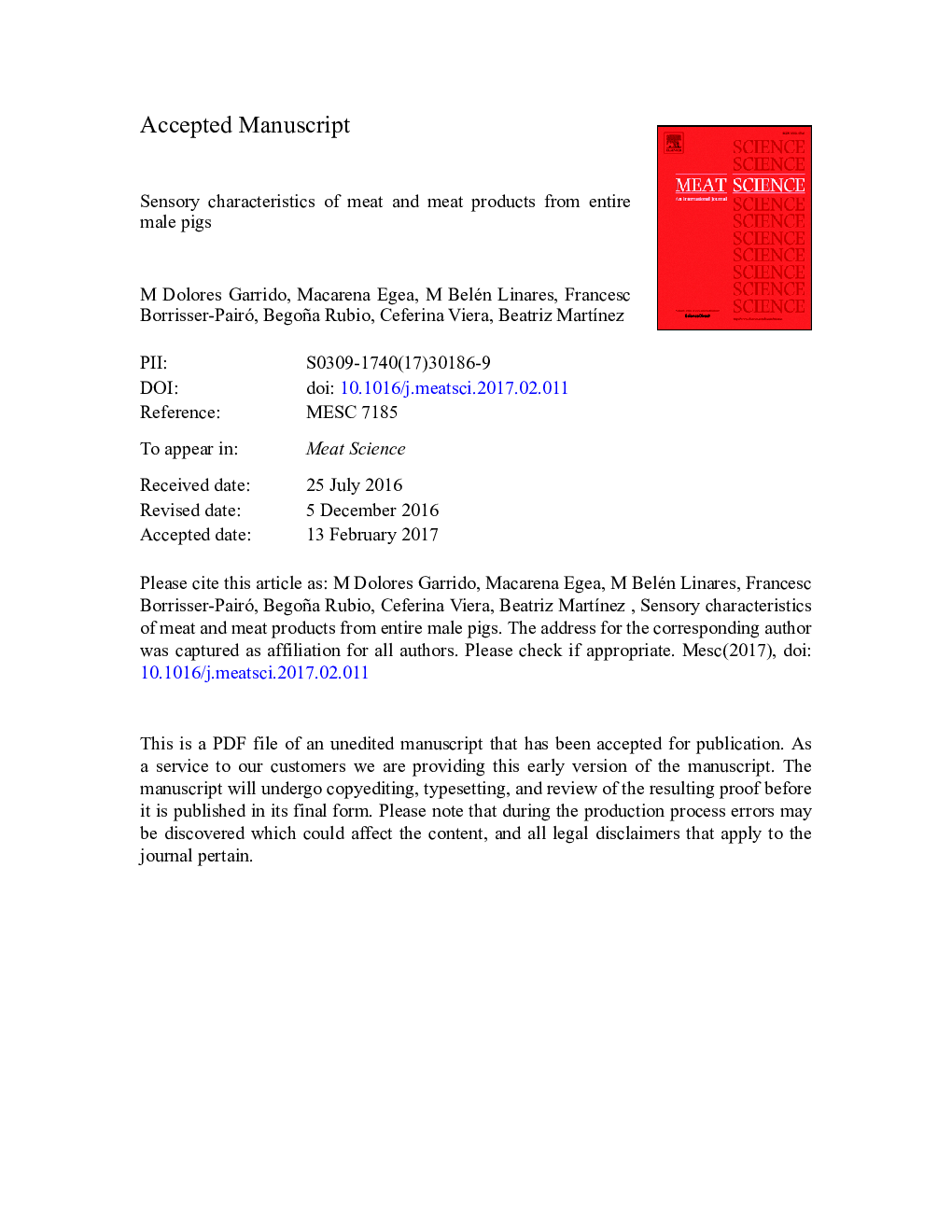| Article ID | Journal | Published Year | Pages | File Type |
|---|---|---|---|---|
| 5543263 | Meat Science | 2017 | 13 Pages |
Abstract
The surgical castration of male piglets has traditionally been practised to prevent the development of boar taint in pork meat, but European rules aim to end this practice on a voluntary basis. This study represents a sensory characterization of the meat and meat products from entire male pigs. Three levels of androstenone concentration in fat were compared: low, 0-0.3 mg kgâ 1; medium, 0.4-0.9 μg kgâ 1 and high, 1-2.75 μg kgâ 1. The use of meat from entire males in meat products lowered the perception of boar taint compared with fresh meat but was insufficient to totally mask it. Androstenone levels seem to influence the intramuscular fat content and hence, on texture. The perception of boar taint in meat products depends on androstenone concentration as well as on the characteristics of the product. It is necessary to develop additional strategies to totally mask androstenone perception in meat and meat products.
Related Topics
Life Sciences
Agricultural and Biological Sciences
Food Science
Authors
M Dolores Garrido, Macarena Egea, M Belén Linares, Francesc Borrisser-Pairó, Begoña Rubio, Ceferina Viera, Beatriz MartÃnez,
